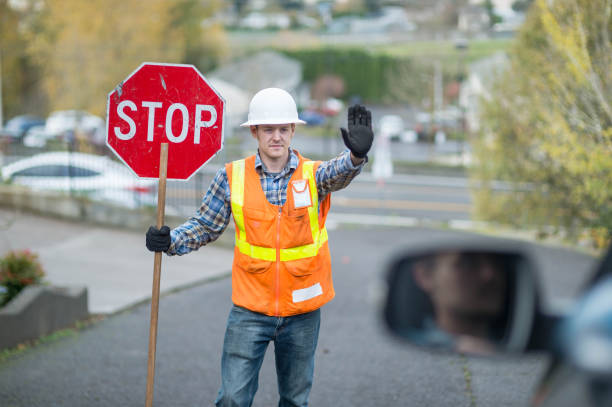Flagging is a critical component of traffic management, especially in road construction projects. It serves as the frontline defense in ensuring the safety of both the workers on-site and the motorists navigating through or around construction zones. Flaggers play a pivotal role in controlling traffic flow, minimizing the risk of accidents, and maintaining an organized work environment.
Ensuring Safety for All
The primary purpose of flagging is to ensure safety. Road construction sites are often dynamic environments with heavy machinery, shifting work zones, and unpredictable hazards. Flaggers are responsible for managing these complexities by directing vehicles safely around the construction area. They communicate with drivers using standardized signals, flags, and stop/slow paddles to control the movement of traffic.
Flaggers are trained to recognize potential dangers, react swiftly to emergencies, and adapt to changing conditions. Their presence significantly reduces the likelihood of accidents involving both workers and motorists. Without effective flagging, construction zones would become chaotic and hazardous, increasing the risk of collisions and injuries.
Managing Traffic Flow
Efficient traffic flow is crucial in minimizing disruptions caused by road construction. Flaggers help maintain a steady flow of vehicles, reducing congestion and preventing traffic jams. By alternating the movement of traffic in single-lane closures or directing vehicles through detours, flaggers ensure that delays are kept to a minimum.
Proper traffic management also reduces driver frustration, which can lead to aggressive driving behaviors. Clear communication and visible flagging signals help motorists understand what to expect, fostering a safer and more cooperative driving environment.
Compliance with Regulations
Flagging is not just a best practice; it is often a legal requirement. Regulatory bodies mandate specific traffic control measures to be in place during road construction to protect public safety. Flaggers must be certified and trained according to these regulations, ensuring they are equipped with the knowledge and skills needed to perform their duties effectively.
Salus Traffic management plans are designed to meet these regulatory standards, incorporating flagging operations as a core component. These plans outline the placement of flaggers, the equipment they use, and the procedures they follow to comply with local, state, and national traffic safety laws.
Adapting to Site-Specific Conditions
Every construction site presents unique challenges, from urban intersections with high traffic volumes to rural roads with limited visibility. Flaggers must adapt their strategies to suit these varying conditions. This flexibility is vital for managing risks specific to each location.
For example, in high-speed areas, additional safety measures such as advance warning signs and buffer zones may be required. In contrast, residential areas might demand more personalized communication with local residents and pedestrians. Flaggers’ ability to adjust their approach ensures that safety is maintained in diverse environments.
Enhancing Communication
Effective communication is the cornerstone of successful flagging operations. Flaggers act as a critical link between construction crews and the public. They relay information about changing traffic patterns, upcoming hazards, and emergency procedures. This communication helps prevent misunderstandings that could lead to accidents.
Flaggers also coordinate with other traffic control personnel and construction workers to ensure that everyone on-site is aware of current conditions. This coordination is essential for maintaining a cohesive and safe work environment.
Conclusion
The importance of flagging in road construction cannot be overstated. Flaggers are vital for ensuring safety, managing traffic flow, complying with regulations, adapting to site-specific conditions, and enhancing communication. Their role is integral to the success of any road construction project.
Incorporating flagging operations into comprehensive traffic management strategies, such as those outlined in Salus Traffic management plans, is essential for creating safe and efficient construction zones. By recognizing the value of flagging, we can contribute to safer roads for both construction workers and the driving public.

